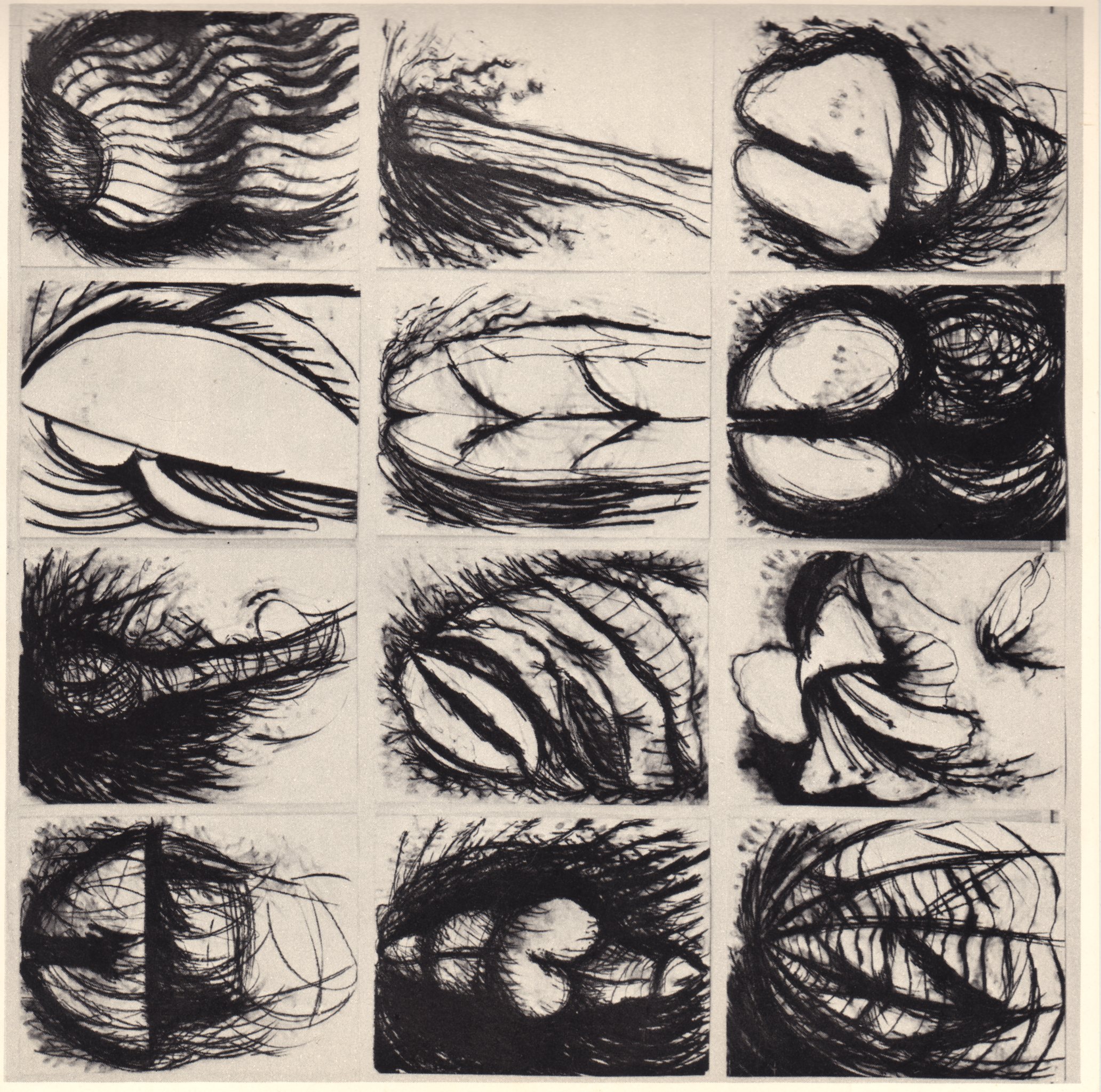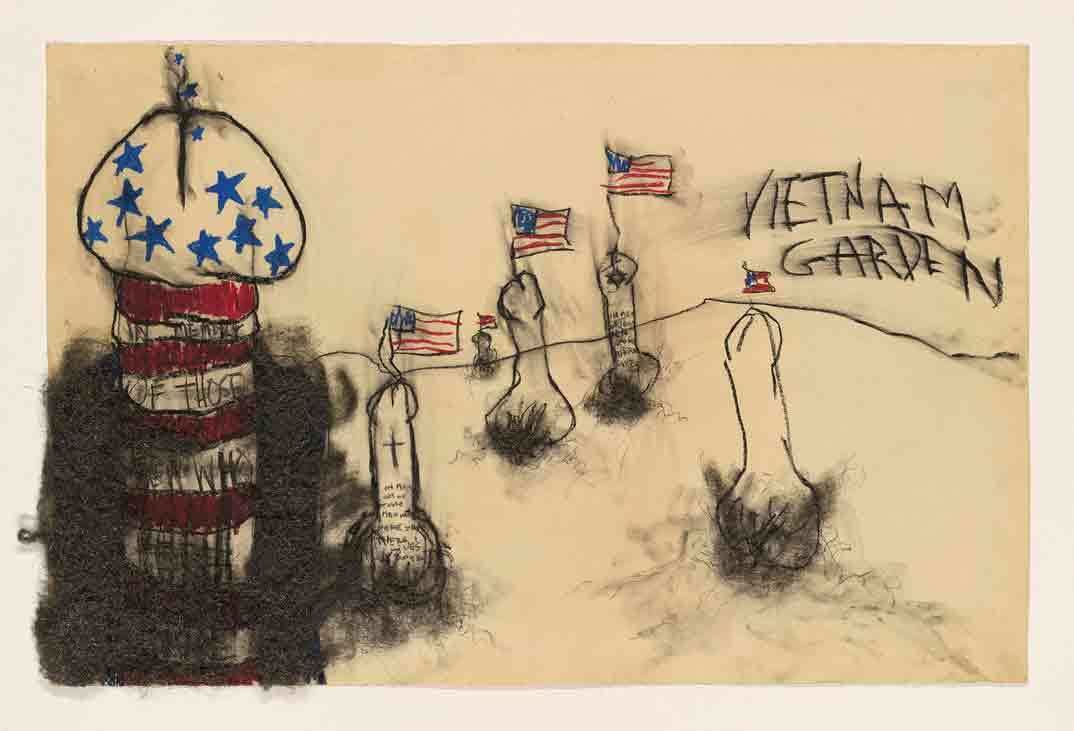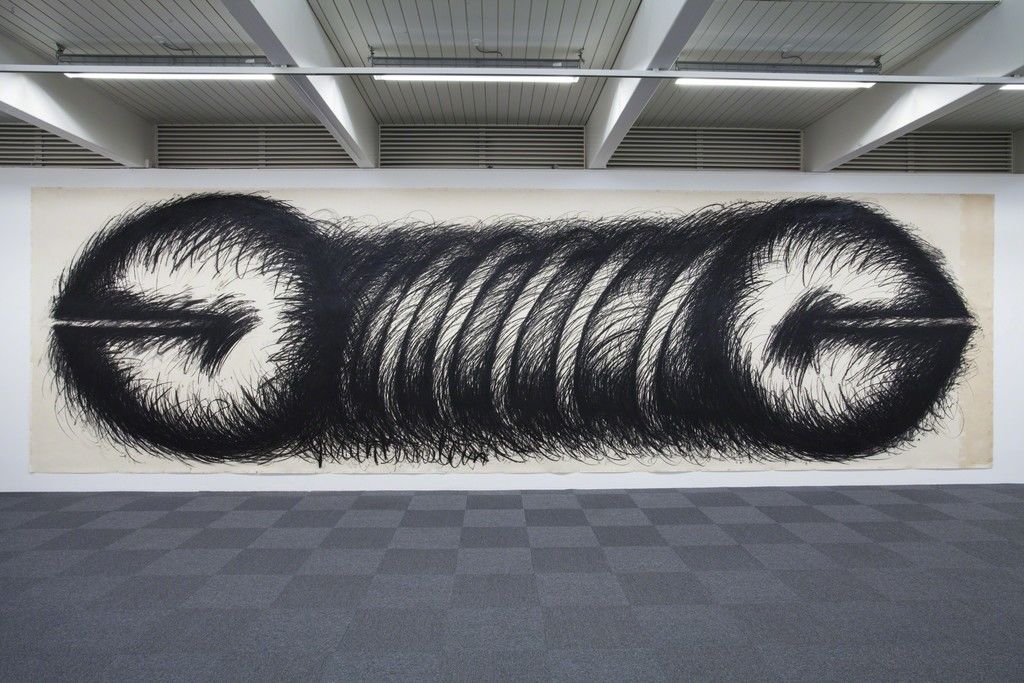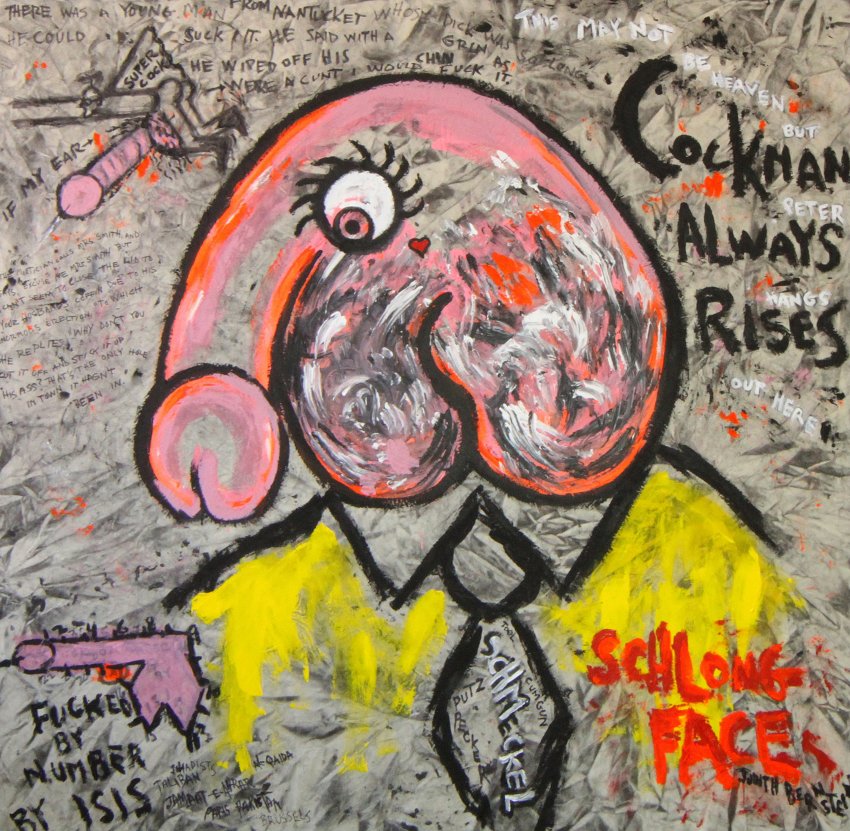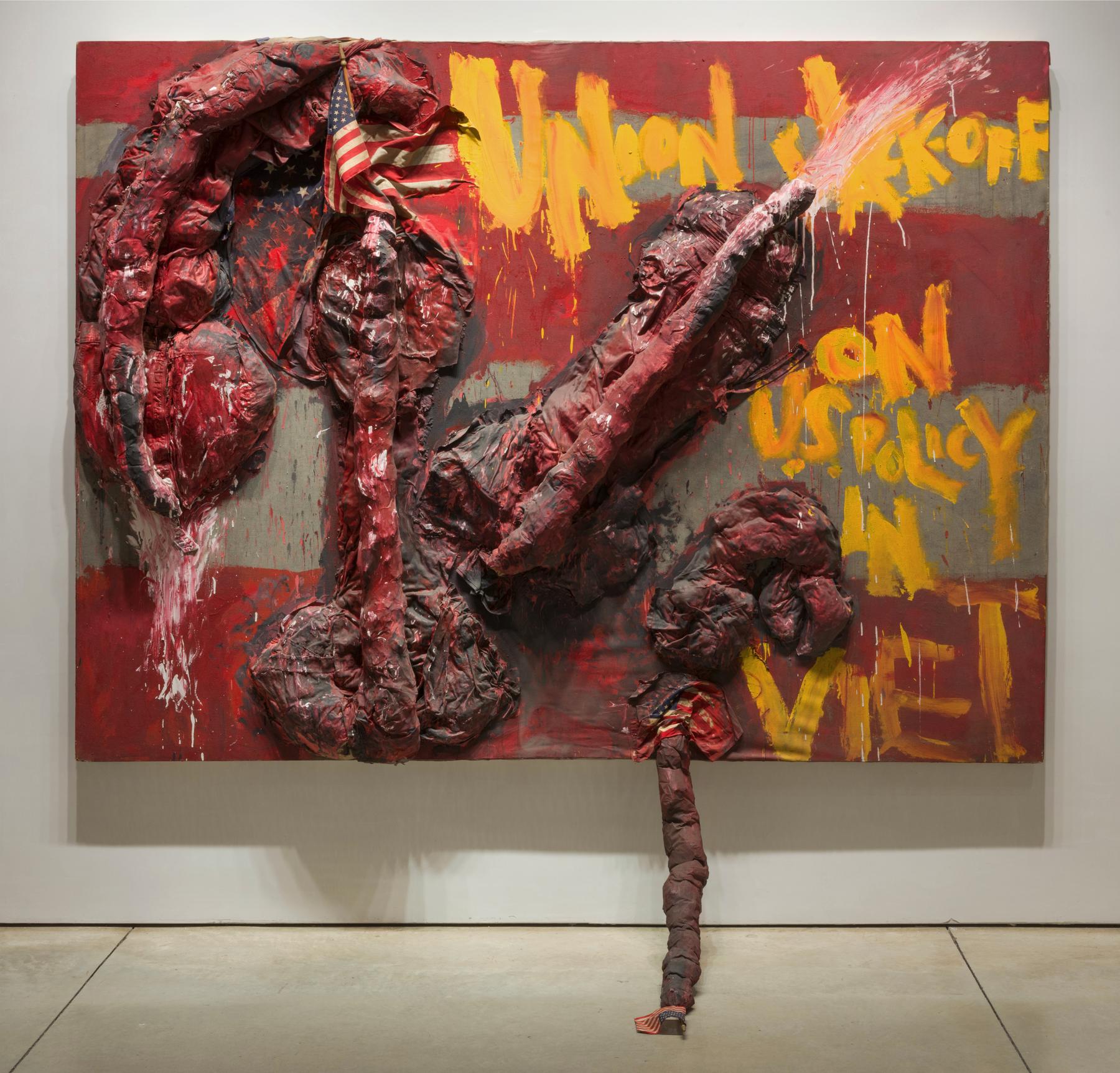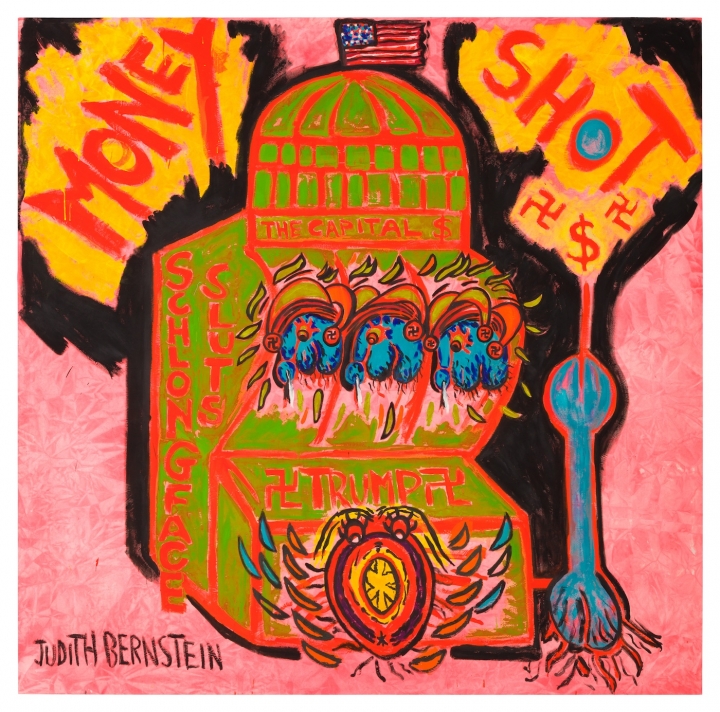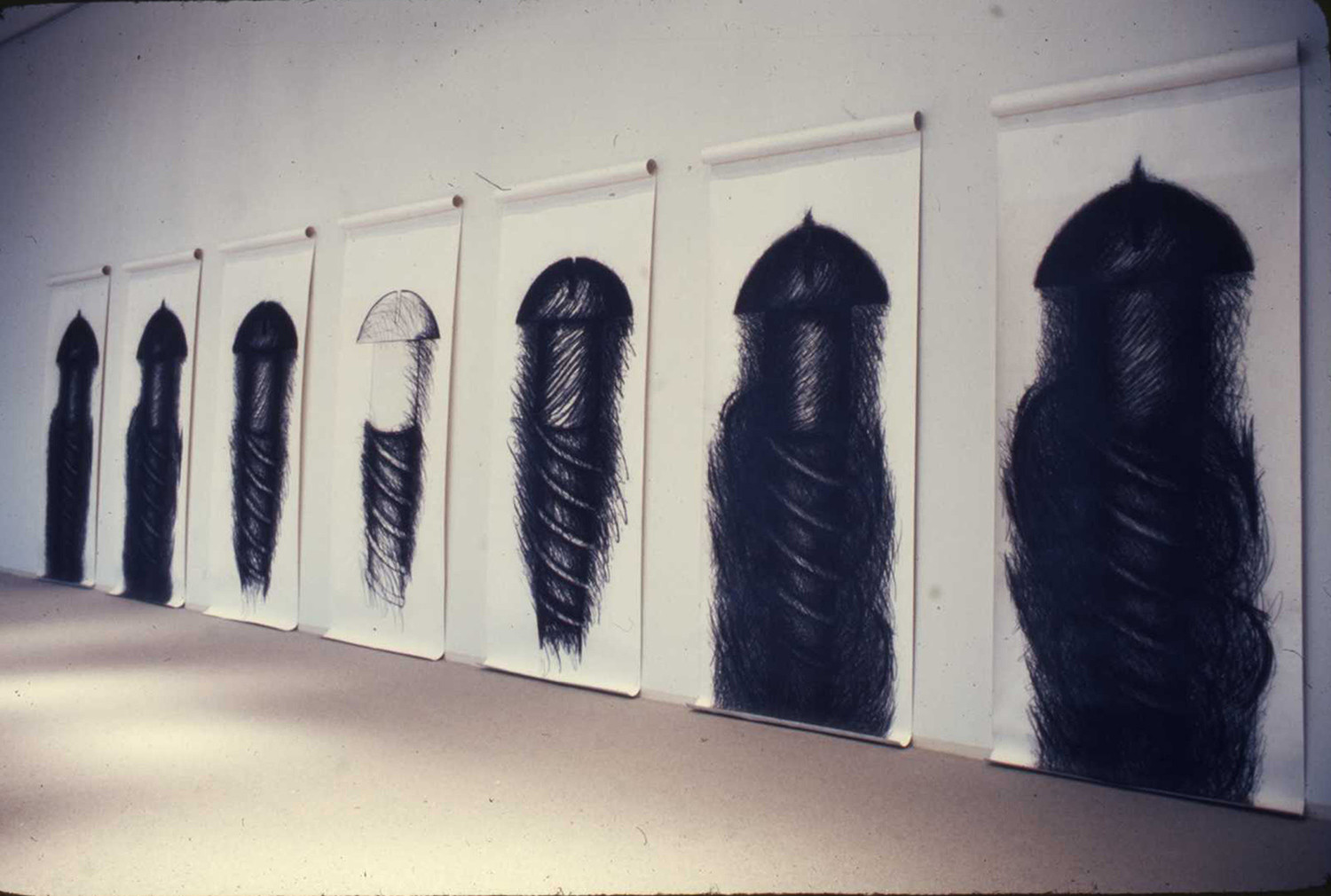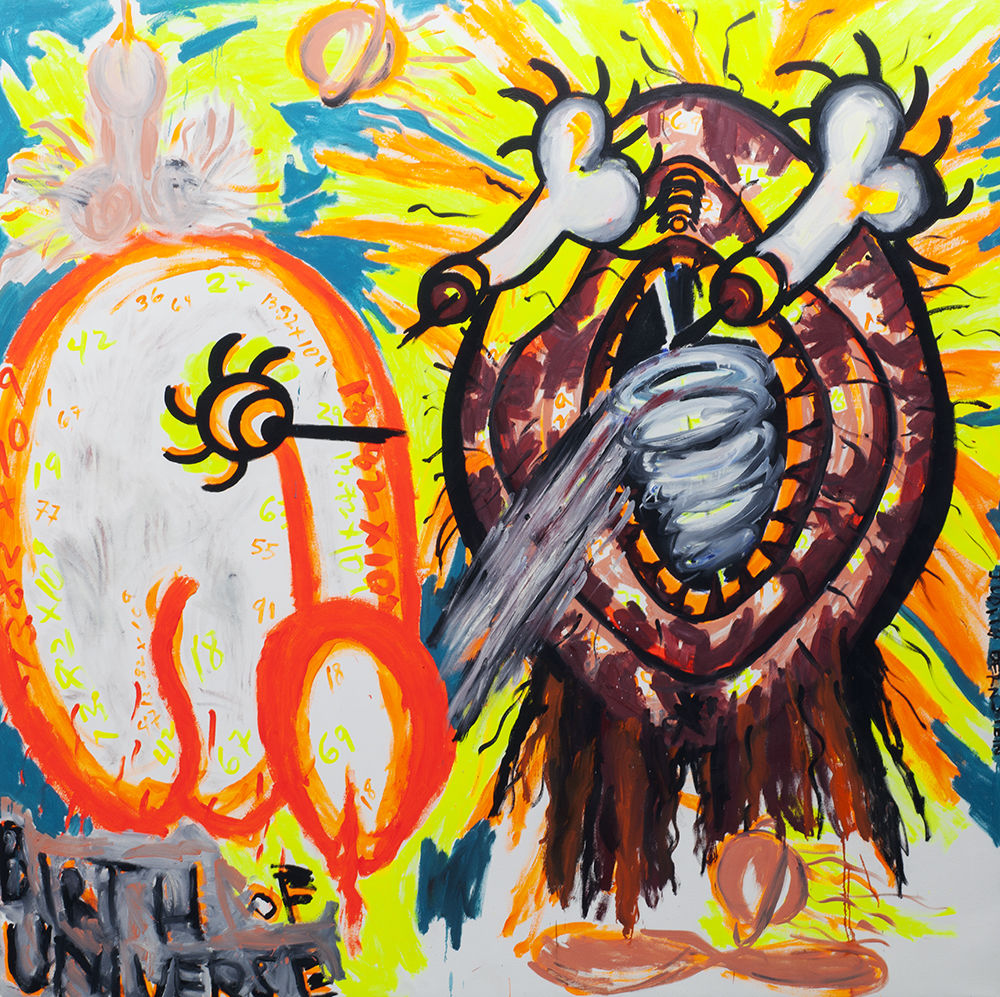“Of course, my work is FEMINIST!!! My work is an extension of self. Critique the men; critique their work. Being OUTRAGEOUS/OUTSCALE. New York style. I want what the men want.”
Judith Bernstein’s bottomless appetite for the profane is likely to provoke even today’s audiences. Her work--often sexually explicit and unabashedly political--explores a wide range of culturally relevant issues that many of her contemporaries have shied away from depicting. Falling in line with other “Prick Art” artists of the 1970s, Bernstein employs large-scale phallic imagery, profane writing, and a variety of other crude elements in high-contrast colors to her paintings, drawings, and sculpture. Inspiration for such subject matter initially sprung from the graffitied bathroom walls of Bernstein’s alma mater, the Yale School of Art. The scatological dialogue in pictures and words on the walls of the men’s bathrooms divulged a certain aspect of the male psyche that Bernstein saw to be useful to her artwork. Several of Bernstein’s creations echo the raw, graffiti-like aesthetic that she had found so fascinating in the Yale men’s bathrooms. Using similar imagery and language, Bernstein voices explicit anti-war sentiments and offers a feminist critique of masculinity, including the destructive qualities therein.
Despite the nationwide sexual revolution that was occurring towards the beginning of her career, Bernstein struggled to gain critical support for her graphic, genitalia-centric artwork. Many of her works were censored from the public. While still a student at Yale, Bernstein had one work banned from a public exhibition due to its depiction of an abstract phallus. Later, in 1974, John Pierron of the Philadelphia Civic Center banned Bernstein’s monumental drawing Horizontal from being shown in the 1974 exhibition ‘Focus,’ despite approval from the all-female panel of jurors. Horizontal--a work from Bernstein’s series of “screw” drawings--was made with large, curving charcoal marks on paper that form the shape of a penis. Pierron claimed that Horizontal “offends [him] on behalf of the children of this city,” and asserted that he had “yet to see the redeeming social value in the work.” Although a petition was signed against the Center’s censorship of Bernstein’s work, ‘Focus’ opened the next day without Judith Bernstein’s work or presence. It seems, then, that within the art world, it is only in hindsight that the legacy of artists like Bernstein comes into focus.
Born in 1942 in Newark, New Jersey, Bernstein gained an early interest in painting during her childhood, when she would sit in on her father’s Sunday painting sessions. She received both her Bachelor’s in Fine Arts and Master of Fine Arts from Yale University, in addition to receiving her M.Ed. and B.S. from Pennsylvania State University. While Bernstein gained some exposure through a solo show with A.I.R. in 1973, and continued to paint after the Horizontal controversy, she would not see major recognition for her work again until more than thirty years later.
During her solo exhibition at Mitchell Algus Gallery in 2008, Bernstein met the artist Paul McCarthy and his daughter, founder and curator of The Box, Mara McCarthy. This fortuitous encounter re-introduced Bernstein to the mainstream art world, affording her a newfound popularity that heightened after a 2012 retrospective of her work at the New Museum. Since her rediscovery, Judith Bernstein has garnered a devoted following as her work continues to gain traction through an array of new platforms.
member 1972-75 | b. 1942 | New York, NY
+ Select Exhibitions
Judith Bernstein: Cabinet of Horrors, 2017-18
+ Selected Press
The Brooklyn Rail (2019) - Judith Bernstein's Archive
Bird (2019) - Chinatown: Judith Bernstein
New York Times (2017) - The Feminist Pioneers Making Provocative Art About Sex
Art in America (2017) - The Men’s Room: Judith Bernstein Talks to Alison Gingeras
Frieze (2017) - 'I suggested calling the gallery TWAT'
Kunsthall Stavanger (2016) - Interview: Judith Bernstein
Third Rail Quarterly (2016) - Interview with Jonathan Thomas
Paul Kasmin Gallery Press Kit
+ Publications
Artforum Review, 2008
Arts Magazine, 1984
"Metaphorical Series" Press Release, 1984
+ Collections
Karma International
Paul Kasmin Gallery
The Whitney Museum of American Art
Brooklyn Museum
Museum of Modern Art
Jewish Museum
The Box LA
Hall Art Foundation
SAMMLUNG VERBUND
Migros Museum
Hildebrand Collection
Yale University Art Gallery
+ Website
